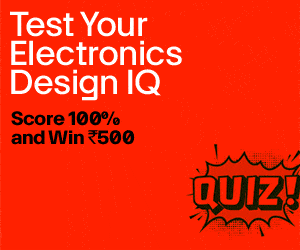The chip with RFID and sensor functions helps smart contact lenses collect and use data. It can also work on other devices.

RAMXEED has developed an ASSP chipset that combines two functions—RFID communication and analog-to-digital (AD) conversion—on a single LSI chip measuring 1.04 mm². The chipset includes the MB97R7100 RFID chip and the MS97R5430 16-bit AD converter chip. Both use FeRAM for non-volatile operation. The MB97R7100 supports EPC global Class 1 Gen 2 at 860–960 MHz, operates at 3.0V with 600 µA current, and includes an SPI interface and four GPIOs. The MS97R5430 uses delta-sigma conversion with a sampling rate of 490 samples per second and also includes FeRAM.
The chipset is used in a smart contact lens platform developed by SEED, a company that makes contact lenses. The platform includes control LSI, a flexible substrate, and a chip embedding process. It uses one system architecture that supports built-in electronics and other parts needed for smart contact lenses. It can work with different types of sensors to collect and process data.
This platform is available to companies, universities, and research groups. It can be used in areas such as communication, entertainment, and education. The design allows new chips or sensors to be added. This helps with development and supports different uses.
The chipset works as an edge device. It collects and processes data inside the lens. This removes the need for outside processing. The chipset can also be used in other products and areas.
Some of the specifications of the RF Chip MB97R7100 include:
- EPC global Class1 Generation2 compliant
- Carrier frequency: 860-960MHz
- RF received power LSI terminal max power: up to 3.0V 600uA
- 1.8V(or 2.2V) and 3V supply lines, 4 GPIOs
- Master/Slave Serial Peripheral Interface
- Embedded with FeRAM
By providing this chipset, the company claims to support the use of electronic components in simple, sensor-based devices that gather and use data directly where needed.






